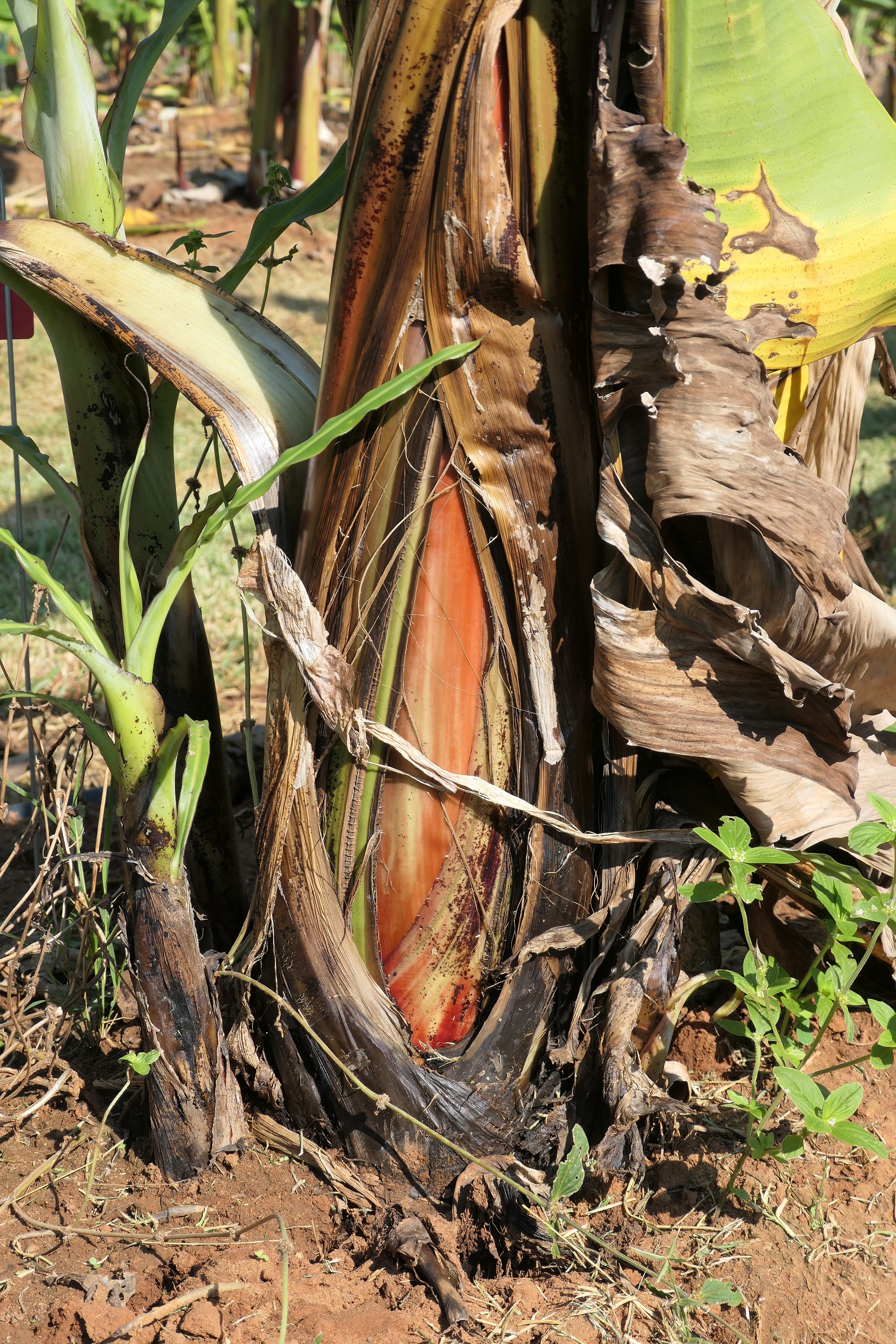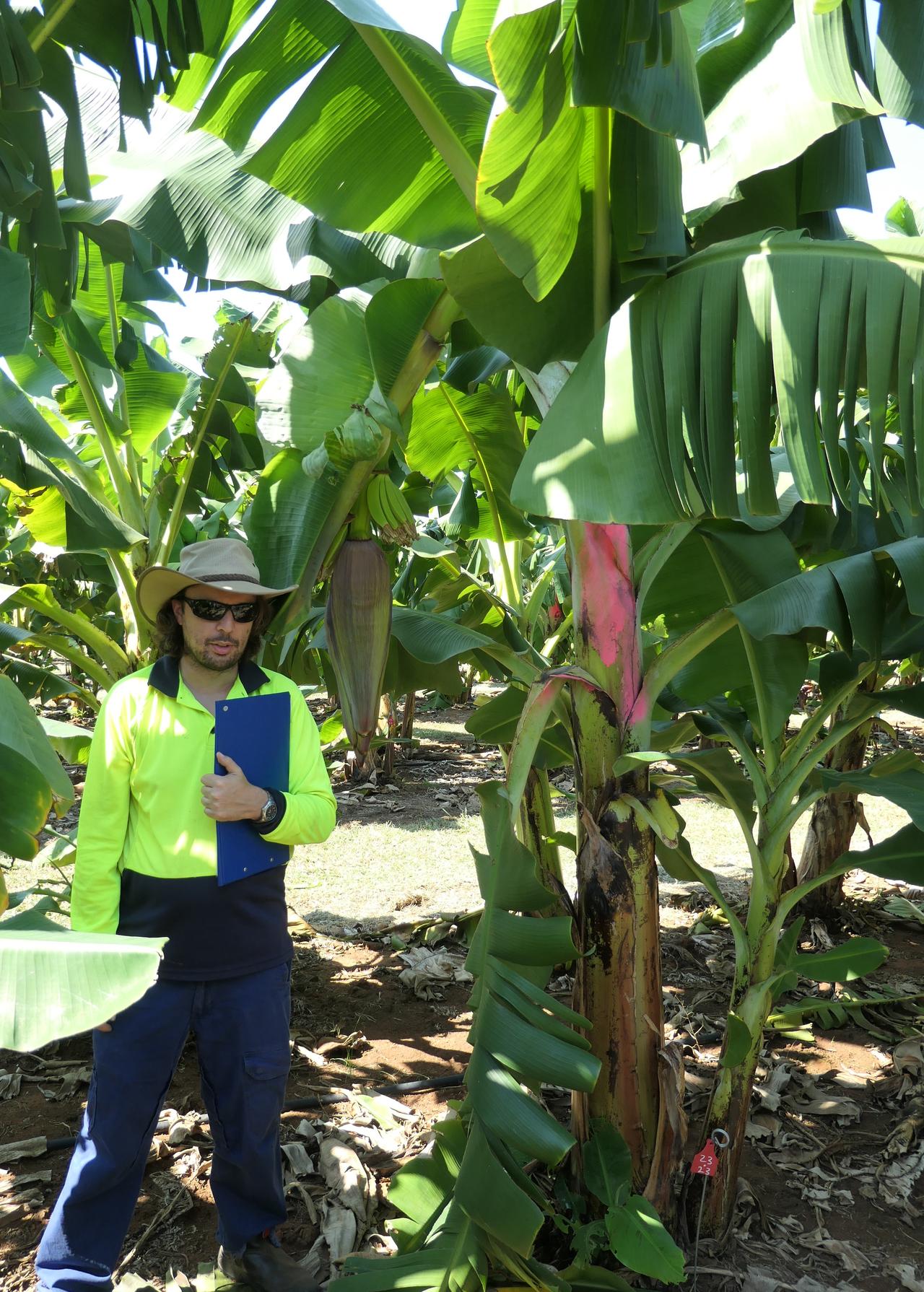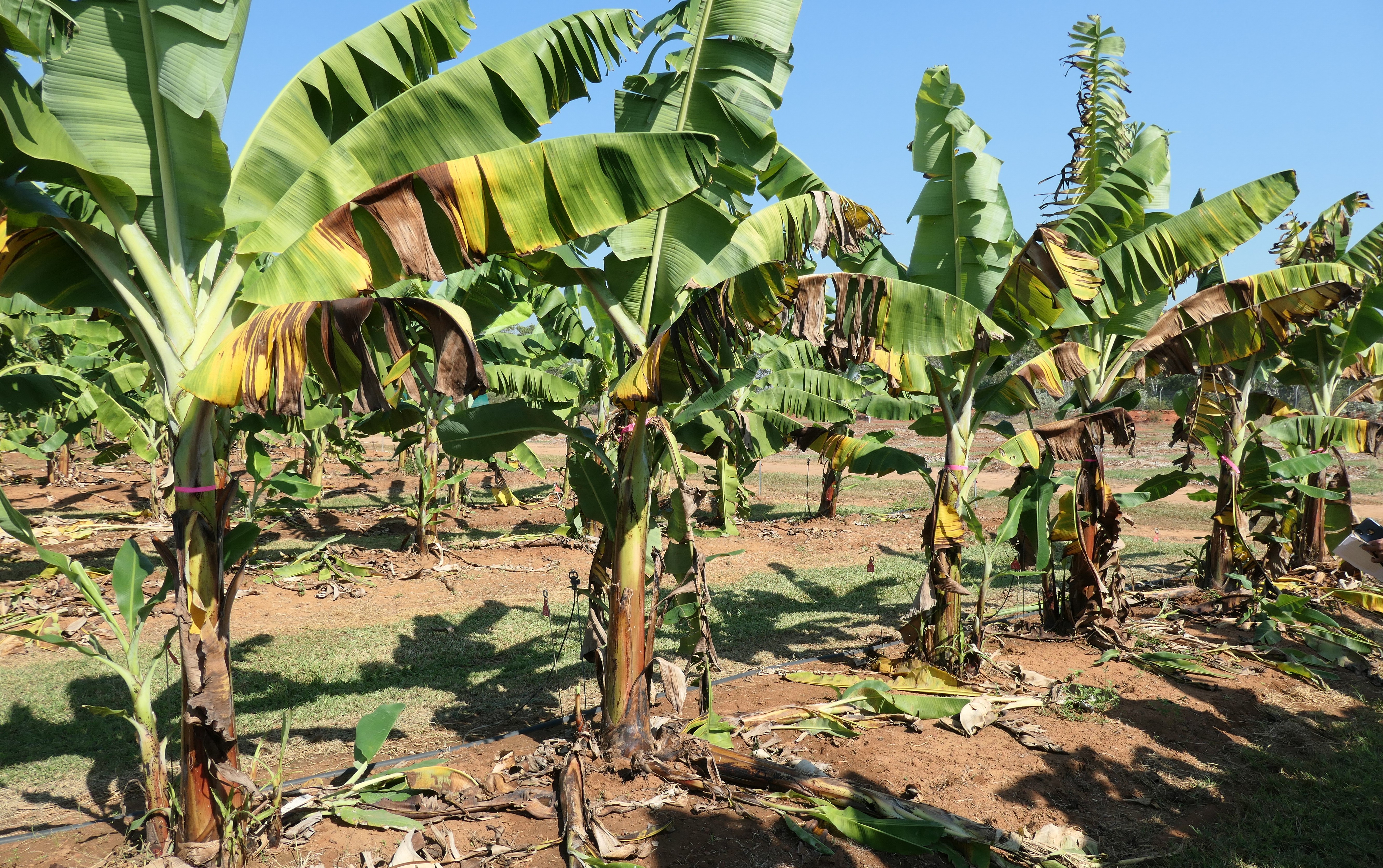
By Sharl Mintoff, Maxine Piggott, Lucy Tran-Nguyen and Chris Kelly, NT DPIR, Jeff Daniells and Stewart Lindsay, Queensland DAF
TR4 screening trials are in full swing in the NT, with new trials established at Coastal Plains Research Farm over the past 10 months.
VARIETY TRIAL
In December 2018, 32 varieties were established to assess resistance to Fusarium wilt TR4 (Panama disease) as part of the banana plant protection project (BA16001). These will be evaluated over a plant and ratoon crop. The evaluation procedure is much the same as that reported for the previous varietal screening trial, with each planting site inoculated with a standard dose of the TR4 pathogen (see Australian Bananas Volumes 49 pp 14-15 & 52 pp 12-13). Varieties in the trial include those shown in Table 1 below. Emphasis is on determining the TR4 reaction of the new Cavendish selections from Taiwan (TBRI) and new novel hybrids from the French West Indies (CIRAD), as well as several parental lines from the CIRAD program.
The latter CIRAD parental lines are included as a sub-trial, with only about half as many plants per variety as the main trial. If this experiment with a different trial design works, it could open the way for improved efficiencies in field screening.
Information on the disease reaction of the CIRAD hybrids and parental lines will be invaluable to the CIRAD breeding program, as well as to other breeding program efforts. It could potentially promote the development of more TR4 resistant varieties for evaluation and potential commercial deployment.
There are three control (check/reference) varieties in the trial to compare against:
• The industry standard and very susceptible Williams.
• Formosana (GCTCV 218). This Cavendish selection from Taiwan probably represents the minimum level of genetic resistance necessary to build an integrated crop management system around, to continue production in the presence of TR4.
• Goldfinger (FHIA-01) resistant.
These controls are essential for putting the disease reaction of new varieties into context.
At about six months after planting, many of the Williams plants are already beginning to show TR4 symptoms, as well as occasional plants of some of the other varieties.

Research Farm, NT. They were impressed with trial progress, saying the ‘world is watching’ Australia’s efforts to curb the effects of this global menace with interest.
L-R: Marc Jackson (Fyffes, Costa Rica), Stewart Lindsay (Queensland DAF), Roberto Young (Dole, Honduras), Sharl Mintoff (NTDPIR), Bob Williams (consultant) and
Yuji Habomoto (Fyffes, Costa Rica).
MUTAGENESIS TRIALS
As part of the ‘Fusarium Wilt Tropical Race 4 Research Program’ project (BA14014), the TR4 resistant Cavendish varieties GCTCV 119, GCTCV 215 and CJ19 have been irradiated and are undergoing field evaluation. We are seeking variants with improved agronomic characteristics while retaining TR4 resistance. Nineteen selections, possessing early bunch emergence and shorter stature, have been made from the stage 1 screening of irradiated GCTCV 119. Up to four plants of each of these were re-established in December 2018 for further screening alongside unirradiated controls.
About 650 irradiated CJ19 were planted in October 2018 for stage 1 screening. Bunching commenced in April. Several plants appear interesting in terms of agronomic features coupled with the absence of external disease symptoms, but it is still too early to say much beyond this. In February this year 244 irradiated GCTCV 215 plants were also planted for stage 1 screening.


screening trial.



